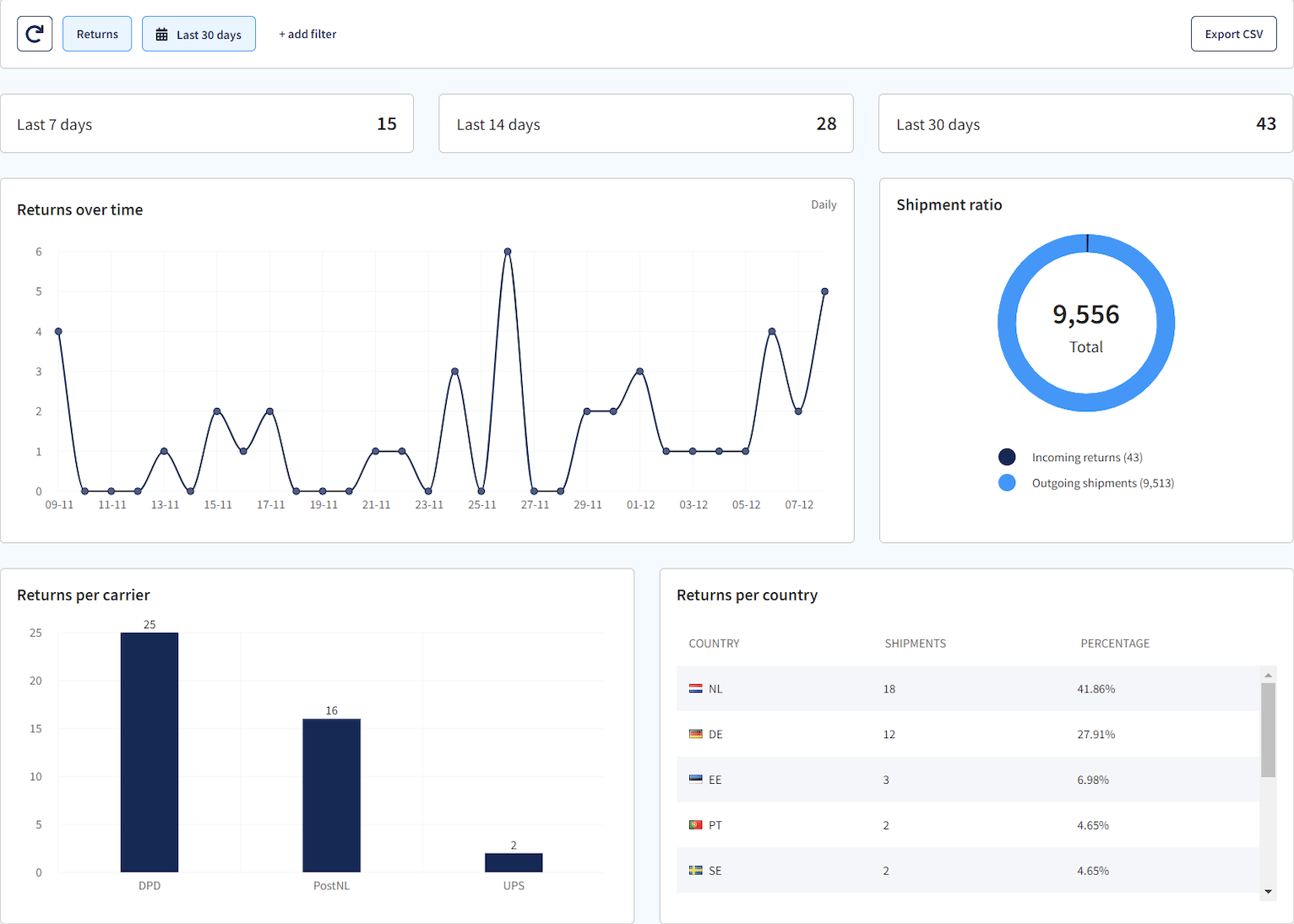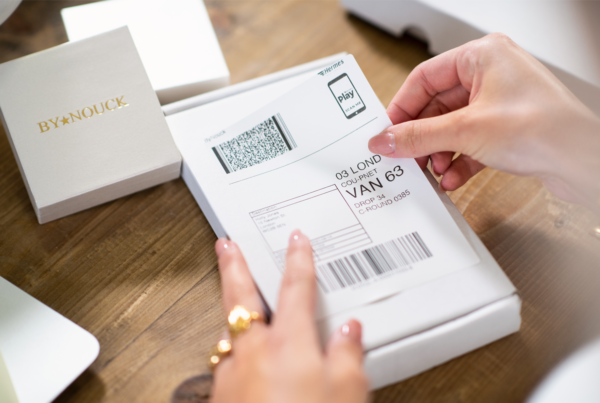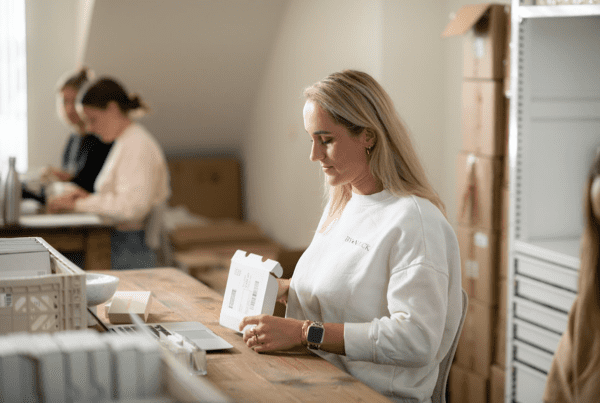Returns are a big part of fashion e-commerce and they’re such a bottleneck for online retailers. E-commerce Delivery Compass shows that 58% of online shoppers tend to return their fashion items significantly higher than other product categories like food and sports.
Interesting, isn’t it?
But don’t worry. You can still turn returns into your advantage if you pay more attention. In this article, we will dive into the world of online fashion and tell you how to receive far fewer product returns and increase your conversions.
What is fashion e-commerce?
Fashion e-commerce is a field that brings a lot of different channels into one plate for online shoppers. It’s definitely more than selling fashion items online. Within fashion e-commerce, brands are doing their best every day to build their community either on social media channels, websites, marketplaces or e-commerce platforms.
Fashion e-commerce is growing so fast that more than half of all fashion purchases are now being made online. The global fashion market size is expected to reach US$1.164,7 billion by end of 2025. And Europe takes the 3rd largest fashion marketplace after China.
As consumers are shifting from offline to online purchases every day, the e-commerce fashion industry is getting more competitive every day and become more important than ever before.
Why returns are higher in fashion e-commerce?
First of all, there’s almost an unfair advantage gap between online stores and physical stores regarding returns. Webshops have a return rate of over 20% more than brick and mortars.
On top of that, fashion industry has the highest return rates compared to other industries. Our study shows that the fashion industry has the highest return percentages: up to 87% in Europe!
The possible reason is that clothing and accessories are very personal and the selection is huge. There’s also an emotional component to choosing clothing and customers want to try it on before they decide whether it suits them. That’s easy to do in a physical shop. Customers can see, touch, and try on the item before buying.
But this is impossible with an online shop; customers are limited to just seeing the product on a screen. However, online retailers are becoming savvier and deploying smart solutions to combine offline shopping features with the advantages of e-retail.
How to reduce fashion returns?
Online shoppers have high demands and brands are trying their best to reduce fashion e-commerce returns, and keep them as low as possible.
First of all, as an online retailer, you’re required to accept returns within 14 days of purchase in the EU with the right of withdrawal. However, the big players in the fashion industry go much further than the ‘minimum’ requirements. Zalando introduced free shipping and a return policy with a 100-day return window.
That actually makes a lot of sense because our recent study shows that online consumers expect to have longer return periods. Indeed, 52% of European consumers always check the return policy before purchasing.
As a result, smaller online shops are forced to become more flexible with their return policy, otherwise, they run the risk of being uncompetitive on the market.
But fortunately, there is hope! Even though customer expectations are increasing and it doesn’t look like they are simply going to change their shopping behavior, we are seeing innovative business strategies for dealing with returns.
3 things to reduce returns in the e-commerce fashion industry:
- Offer an extended return period of at least 30 days.
- Manage customer expectations (or do so more effectively)
- Help online shoppers find the right fit
Struggling with international returns? Check out our article on tackling international returns for the best tips!
Manage Your Customers’ Expectations
If the customer receives the product they expect, there is certainly a much greater chance that the product will not be returned. That’s why it’s important to describe the product as well as possible. Show the customer what it is, what it looks like, how it feels and how it fits. These few simple changes to your product pages will take you a long way:
1. Include detailed product photos
Good product photos are obviously a must. But do you also use close-up, detailed photos? To get a sense of a product, you want to know how it feels. When consumers can clearly see what kind of material something is made of, they often automatically know what it feels like. They subconsciously compare it with something they have touched before and can imagine how it feels.
2. Write clear product descriptions
A good product description ensures that customers know exactly what they are getting. This can make them want the product even more. Be careful not to focus on selling the garment, but on describing your product as clearly as possible. Go as far as to include sensory words like soft, rough, smooth, thick or light. You want to help online shoppers as much as possible, so be as accurate and truthful as possible. Exaggerated or false claims will not help reduce your return rate.
3. Describe the style & fit
Clothing sizes and the way a garment fits differ depending on the brand and where it comes from. By describing the fit for each piece of clothing (e.g. regular, tight, wide, skinny or how it drapes in centimeters), you can reduce doubts and help the online shopper choose the product that best fits their style. Is there a model in your photos? If so, give their dimensions and say which size the model is wearing.
Deploying all of the strategies above a very well-known fashion e-retailer SHEIN is a great inspiration with a responsive web design, appealing content and detailed product descriptions.

Help Your Customers Find The Right Fit to Reduce Returns
The biggest problem in online fashion is the right fit. Fortunately, some significant steps have been taken in this area in recent years.
4. Include size charts & brand comparisons
The most common solution is a simple size chart that explains the dimensions of a garment. The disadvantage of such a chart is that people often do not want to or cannot measure themselves well. That’s why you sometimes see brands that compare their clothing sizes with those of other brands. That way, the customer can choose the right size by looking at the size of a well-fitting garment they already have in their closet.

5. Use body doubles
Another way to make it easier for customers to shop is to give them a model with which they can compare themselves. This gives them an idea of what the clothing would look like if they wore it themselves, which makes online shopping a little easier.
For example, to avoid the trash island of poor fit, Mys Tyler provides an app in which women share outfits and show how they fit, how to style and where to buy – so you can enjoy body-relevant fashion inspiration.

6. Install Virtual Fitting rooms & Fitting Tools
We are increasingly seeing online shops using a fit tool. With a few simple questions, such a tool can help you find the right size. By combining customer data with clothing data, these tools can make a big difference.
Examples include Warby Parker, an online retail company that sells eyeglasses and provides a virtual try-on feature through its iOS app. That technology helps customers to see whether their choice suits them before purchasing. Meaning less returns, more happy customers.

7. Include consumer data & experiences
Another way to reduce fashion e-commerce returns is to look at which items a customer has returned in the past and which they have not. You can then give that customer suggestions about other clothing items that would probably suit them. Look at similar customers and then divide your customers into target groups so you can approach them more personally.
Good news is Sendcloud can help you understand your customer’s expectations and market dynamics through Analytics and that way you can reduce your return rate and increase conversions.
Being more specific you can analyze:
- Your overall return rate
- The main reasons for return (and optimize this to reduce your overall returns)
- Which return methods are used the most
- Trends in increased returns (certain times of the years, certain promotions or products, etc)
- The cost of your returns (and when you’re losing money)

If you want to learn more about tracking your returns data and how this can help your business grow, visit our website.
Alright, getting back on how to reduce fashion e-commerce returns, a business concept that is increasingly popular in recent years is the online personal shopper. Companies like The Cloakroom, Suitsupply, the Outfittery, and Zalon (a division of Zalando) all offer something similar.
The customer indicates their style and their sizes and then a personal shopper puts together an outfit. They can then try on this outfit at home and send back the products they don’t want to keep. What’s striking is that these companies primarily focus on men. That is probably because women tend to prefer to shop for themselves.
With this business concept, retailers assume that customers are going to return some products; the only thing they want to achieve is to increase the customer’s lifetime value.
Getting to know the customer better and learning what kind of clothing fits them best makes it easier to send them the right clothing. That increases the likelihood that the customer will keep more items.
8. Try Body Scans
When we look to the future of the e-commerce fashion industry, we see a lot of experimentation with 3D scan technology. A great deal of research is now being done in this field and the idea is being pursued by several large retailers. Body scans are nothing new, but they are not yet being used on a large scale for e-commerce. The problem lies in a lack of data: clothing brands and retailers need to digitize the sizes of their products in the right way. For example, there are now retailers who offer apps that can help you find your shoe size with your phone’s camera.

Recap
E-commerce returns remain an important and less enjoyable part of the online fashion market. Trying on clothing seems to be the only way that people can judge whether they really like it.
However, it’s important that you do as much as possible to help customers make the right choice. If you’re not an online giant, this means you have to be distinctive and make good product pages with clear size charts. Midsize and large retailers need to go a step further and combine their customer data with new technologies.
If you succeed in managing your customer’s expectations and offering them the perfect fit, fewer returns will not be the only benefit. If your customers are confident that they will get the right style and fit from you, you also will see increases in:
- Conversion
- Average order value
- Lifetime value per customer
- Customer loyalty
- Number of ambassadors
We hope you’ll find this blog post useful and best of luck with reducing your returns.
Don’t forget that whatever strategy you deploy, returns are inevitable and that’s the main reason why you need a proper returns strategy.
We at Sendcloud are happy to help you with that with our return portal. This way, we can help you transform returns into revenue accelerators!

















